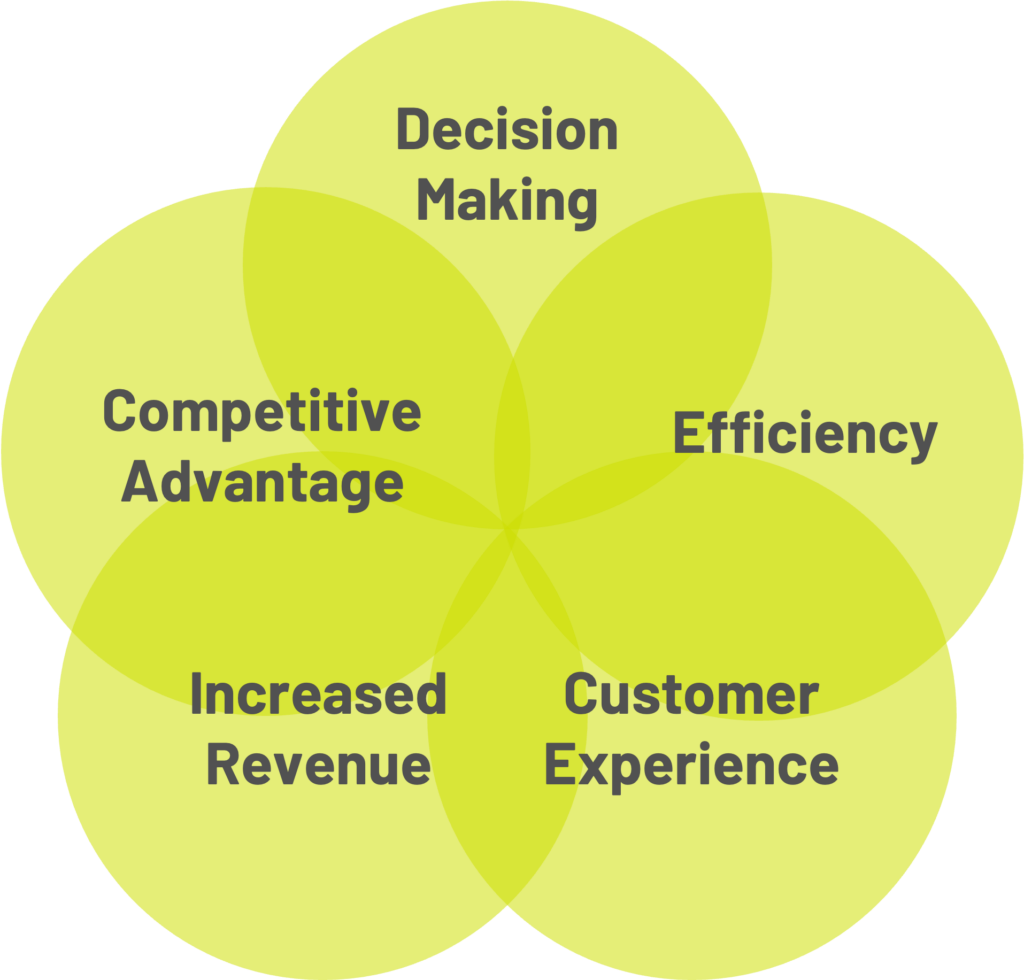As businesses become more competitive, it’s crucial to stay ahead of the game by using data analytics to inform and guide decision-making. With the abundance of data available in today’s digital landscape, businesses can use data analytics to gain insights that can help them improve their operations, increase revenue, and make informed decisions. In this article, we’ll explore the importance of data analytics, the benefits it can offer, and how you can use it to unlock your business’s full potential.
What is Data Analytics?
Data analytics is the process of examining and interpreting data sets to uncover patterns, trends, and insights that can inform decision-making. It involves collecting, cleaning, analyzing, and visualizing data to extract meaningful information that can help organizations make data-driven decisions. Data analytics uses statistical and computational techniques to identify patterns and relationships within large datasets, often from various sources.
The Importance of Data Analytics for Businesses
In today’s digital world, data is being generated at an unprecedented rate. Businesses can leverage data analytics to gain insights that can help them understand their customers better, optimize their operations, and identify new opportunities for growth. Data analytics can also help businesses to:
Improve efficiency
Data analytics can help businesses identify inefficiencies and areas where they can cut costs, streamline processes, and improve productivity.
Enhance customer experience
By analyzing customer data, businesses can gain insights into customer behavior, preferences, and needs, enabling them to create personalized experiences that meet their customers’ needs.
Increase revenue
Data analytics can help businesses identify new revenue streams, optimize pricing strategies, and target new markets.
Mitigate risks
Data analytics can help businesses identify and mitigate risks, such as fraud, cybersecurity threats, and compliance issues.
Stay competitive
Data analytics can help businesses stay ahead of the competition by providing insights into market trends, customer behavior, and industry shifts.
The Benefits of Data Analytics
Implementing data analytics can provide numerous benefits to businesses, such as:
1. Better Decision-Making
Make more informed decisions and data-driven recommendations by analyzing your data sets properly. Identify growth opportunities, optimize operations, and make better-informed decisions about investments, resources, and strategies.
2. Improved Efficiency
Focusing on the right questions and metrics to analyze your data, will help you identify inefficiencies in your processes and operations. Thus, you will improve your strategy and optimize your workflows and productivity. This can lead to cost savings and improved performance across the organization.
3. Enhanced Customer Experience
Analyzing customer data is a key technique to help your business gain insights into customer behavior, preferences, and needs. This will enable you to create personalized experiences that meet their customers’ needs. Your business will be able to build stronger customer relationships and increase customer loyalty.
4. Increased Revenue
By using the right data analytics techniques, you will be able to identify new revenue streams, optimize pricing strategies, and target new markets. This will increase your revenue and growth opportunities for your organization.
5. Competitive Advantage
Data analytics will help byour business to stay ahead of the competition by providing insights into market trends, customer behavior, and industry shifts. This can enable businesses to anticipate changes and adapt quickly, giving them a competitive advantage in the market.
How to Implement Data Analytics in Your Business
Implementing data analytics in your business can be a daunting task, but it doesn’t have o be. Here are some steps you can take to implement data analytics in your business:
1. Define your goals and objectives
Before you start implementing data analytics, you need to define your goals and objectives. What do you want to achieve through data analytics? Do you want to improve efficiency, enhance customer experience, increase revenue, mitigate risks, or all of the above? Clearly defining your goals and objectives will help you determine what data you need to collect and analyze.
2. Collect and clean your data
Once you’ve defined your goals and objectives, you need to collect the data that will help you achieve them. This may involve collecting data from various sources, such as customer feedback, sales data, website analytics, and social media metrics. It’s important to ensure that your data is accurate, complete, and reliable, so you may need to clean and preprocess your data before you start analyzing it.
3. Choose the right analytics tools and techniques
There are numerous data analytics tools and techniques available, each with its own strengths and weaknesses. Choose the ones that are best suited to your business needs and goals. Some common analytics tools and techniques include data mining, predictive modeling, regression analysis, and machine learning.
4. Analyze your data and extract insights
Once you’ve collected and cleaned your data, it’s time to analyze it and extract insights. This may involve running statistical analyses, creating visualizations, and identifying patterns and trends within your data. The insights you gain from data analytics can help you make more informed decisions and optimize your business operations.
5. Communicate your findings and take action
Finally, it’s important to communicate your findings and take action based on your insights. This may involve creating reports or dashboards to share your findings with stakeholders, or using your insights to make data-driven decisions that improve your business performance.
Common Data Analytics Tools and Techniques
There are numerous data analytics tools and techniques available, each with its own strengths and weaknesses. Here are some common data analytics tools and techniques you may want to consider:
1. Data mining
Data mining is the process of extracting useful information from large datasets. It involves identifying patterns, trends, and relationships within your data, often using machine learning algorithms.
2. Predictive modeling
Predictive modeling involves using statistical algorithms to make predictions about future events based on historical data. It can be used to forecast sales, identify customer churn, or predict future trends.
3. Regression analysis
Regression analysis is a statistical technique that is used to identify relationships between variables. It can be used to determine how one variable affects another, and can help you identify factors that are driving changes in your business performance.
4. Machine learning
Machine learning involves using algorithms to automatically learn patterns and insights from your data. It can be used for predictive modeling, classification, and anomaly detection.
5. Data Visualization and Communication
Data visualization is the process of creating visual representations of your data, such as charts, graphs, and dashboards. Data visualization can help you communicate your findings more effectively and make it easier to identify patterns and trends within your data. When communicating your findings, it’s important to use clear, concise language and to focus on the insights that are most relevant to your audience.

Challenges of Data Analytics
Implementing data analytics can be challenging, particularly for small and medium-sized businesses. Here are some common challenges you may face:
- 1. Data quality
Data quality is crucial for effective data analytics. If your data is inaccurate, incomplete, or unreliable, your insights may be misleading or incorrect. It’s important to ensure that your data is clean and reliable before you start analyzing it. - 2. Data integration
Data integration can be a challenge if you are collecting data from multiple sources that use different formats or systems. Ensuring that your data is integrated and standardized can be time-consuming and require technical expertise. - 3. Lack of skilled resources
Implementing data analytics often requires specialized skills and expertise, such as data scientists, analysts, and IT professionals. Finding and hiring skilled resources can be difficult and expensive, particularly for small businesses. - 4. Cost
Implementing data analytics can be costly, particularly if you need to invest in new hardware, software, or infrastructure. Additionally, ongoing maintenance and support costs can add up over time. - 5. Security and privacy
Data analytics involves collecting and storing sensitive data, such as customer information, financial data, and trade secrets. Ensuring that your data is secure and that your analytics processes comply with data privacy regulations can be a significant challenge.
Conclusion
In today’s digital age, data is a valuable asset that can help businesses make more informed decisions and unlock their full potential. By implementing data analytics, businesses can gain insights into their operations, customers, and markets, and use that knowledge to improve their performance and competitiveness. While implementing data analytics can be challenging, the benefits are significant, and businesses that invest in data analytics are more likely to succeed in today’s competitive market.
FAQs
- 1. What is data analytics?
Data analytics is the process of collecting, cleaning, analyzing, and interpreting large datasets to gain insights and make data-driven decisions. - 2. What are some common data analytics tools and techniques?
Common data analytics tools and techniques include data mining, predictive modeling, regression analysis, and machine learning. - 3. What are some challenges of implementing data analytics?
Some common challenges of implementing data analytics include data quality, data integration, lack of skilled resources, cost, and security and privacy. - 4. How can data analytics help businesses?
Data analytics can help businesses gain insights into their operations, customers, and markets, and use that knowledge to make more informed decisions and improve their performance. - 5. Is implementing data analytics only for large businesses?
No, businesses of all sizes can benefit from implementing data analytics. However, smaller businesses may face additional challenges, such as lack of resources and expertise, and may need to start with smaller-scale implementations.

